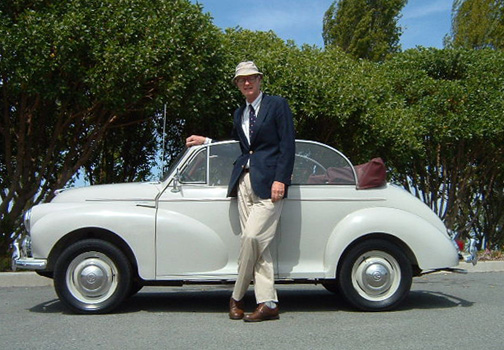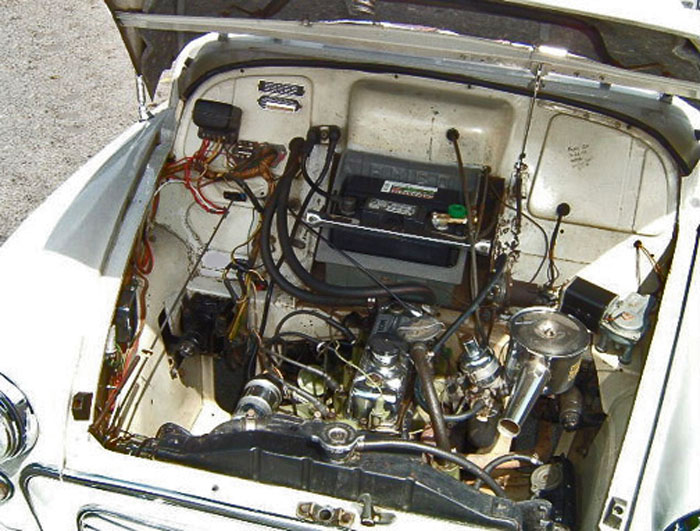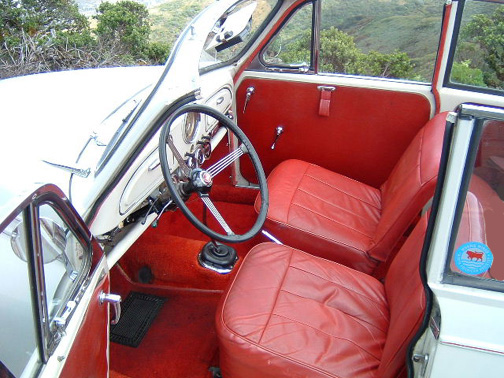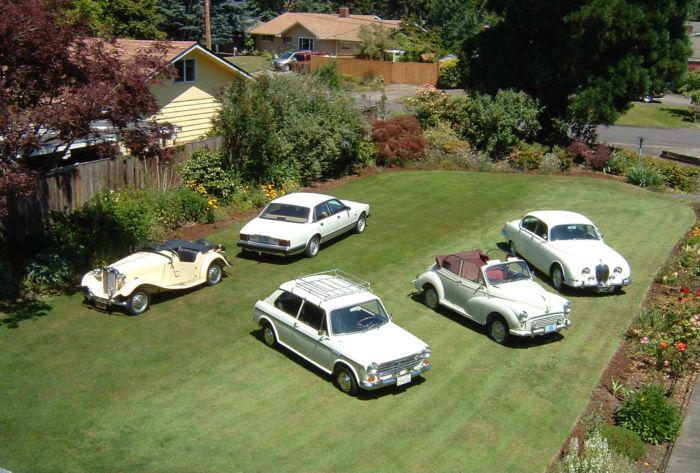
With all of this talk about upgrading Morris Minors, there is still a good case for driving a good running unmodified Minor, as long as your requirements don't exceed the capabilities of the car. The original Minor 1000, introduced in 1957, and the 1098 cc version built between 1964 and 1971 are competent, well engineered little motors that are easy to repair and find parts for. Well kept, they should provide economical transportation forever.
The main advantage to maintaining a car as stock as possible, besides the obvious historical significance, is that it alleviates much of the guesswork that becomes necessary when it turns into a collection of "a little Datsun this and a little MG that," put together by that genius fabricator who moved to a farm in Idaho in 1992. HE knows what he put in your car and how he did it, but that doesn't do YOU much good when he's 3000 miles away. Your present mechanic might be able to cipher most of it out, but also be prepared to pay for some "re-engineering" of the stuff the new guy doesn't quite understand or feels was done "Mickey Mouse." Even if you do your own work, it's always easier to break out the manual and bolt the parts right on. You end up trading performance for ease of maintenance.
This Pearl Gray convertible, originally owned by retired Rear Admiral Joseph Quilter (USN) of Portola Valley, California, has been in daily use since it was delivered in England in 1960. This was not Joe's first Minor. His first, a 1953 Series II convertible bought secondhand in 1955, was replaced by a brand new, yellow 1957 Minor 1000 ragtop a few years later. His cars were primarily used as commute transportation for Joe's daily 30 mile round trip to work at Lockheed Aerospace in Sunnyvale.
In 1960, Joe's daughter Jane, had just graduated from college and was planning an extended European vacation. Joe agreed to buy a new Minor Convertible for her to use on her overseas adventure. The car then was to be shipped to California when the trip was over. Jane took delivery of the at the Cowley, Oxford factory on June 30th, drove all over the British Isles, Scandinavia to Portugal, then over to Greece, and back to Germany. In a six month period, Jane covered over 12.000 trouble free miles! The car was loaded on a ship in LeHarve, France and dispatched to San Francisco. Admiral Quilter collected his new little Minor and immediately put it into daily commute service. Named "The Pip," short for pipsqueak, this little ragtop has been his primary car since.
To set the scene we must envision the San Francisco Bay area in the year 1961. There were few freeways and most surface streets were without much traffic control. A standard Minor 1000 was perfect for the 35 - 50mph speeds that were usually encountered on a typical commute. Portola Valley, now a thriving suburban community, was so rural at that time that there were still "hitching posts" near the stores in case you had ridden your horse into town! Joe used his Minor primarily for commuting until he retired from Lockheed in 1969. During this time, son John used the car for local adventures and sports car ralleys. John, presently working for Jaguar cars, has maintained the car faithfully since high school.

The car is still running its original 948 engine. The engine and clutch were overhauled at 63,000 miles and once again at 144,000 miles. Today, at over 180,000 miles, this Minor is still running strong. The only modification done to the car is a recent addition of Sprite disc brakes, a nonstock, though bolt-on, upgrade that is more a concession to the increase in the San Francisco Peninsula population and traffic than a wanton act of hot rodding. Though the exterior paint has been resprayed twice and the seat leather redone, the car still wears its original top after 36 years!
Joe passed on a few years ago and left the Minor to his son John, who wrote, "My father was one of the few people living in Portola Valley who drove the same car for 36 years and the same type of car for over 41 years! He was always recognized by the locals and the car never fails to get comments from people who have fond memories of Morris Minors from their past. Since the car was sold in so many countries around the world, many immigrants from the UK and ex-colonies immediately notice the car and comment about it."

Driving Impressions
The Admiral's car is clean. Not like a fresh pristine show car but more like a fine leather chair that one would find at an exclusive, old money, men's club. The wrinkles, wear and years of careful use are waxed, oiled, and spotless. Joe, a Navy aviator and flight trainer since the biplane days, insists on keeping all of his cars "flight ready" and the Morris is no exception. Mileage of service intervals are written in grease pencil at the corner of the dashboard and updated when work is done. The dash also is festooned with an amazing array of gauges from a tachometer to an altimeter! The shift lever, from an MG 1100, is chrome plated and long enough to place the knob at steering wheel level.
Turn the key and you're greeted by the all too familiar tick-tick-tick of the fuel pump. One pull of the starting knob startles the little engine to life. As it warms, the engine settles out to a smooth purr. I asked John Quilter, who rebuilt the engine in his garage, why it seemed excessively smooth and eager to rev? He smiled and said it was stock but later alluded to that it might be sort of balanced and the last rebuild included a slight overbore. Enough said, it pulls like an 1100.
The Quilter Minor runs just great. The long shifter feels a little odd at first but one quickly gets used to it. The clutch is smooth and soft and the gearbox is quiet and crunchless. This car is in its element on the back roads of Portola Valley. With John and I aboard, all but the steepest of hills can be crested in top gear. The torsion bars, rack and pinion steering and Michelin radial tyres work together to provide a safe, predictable and almost sporting drive through the unbanked bends and country roads. The disc brake conversion seems to reduce the heat fade on long downhill stretches but really doesn't make that much difference most of the time.
The most striking observation that can be made after driving a number of Minors, modified and not, is that by the time that the 1000 model was introduced, the engineering was just about there. A correctly modified car will go a bit faster, stop better and corner with less lean, but a well maintained original is no slouch either.

John Quilter has since move to Oregon, where John is currently and happily collecting his cars in the "more car friendly" state of Oregon. (Ed.)

BACK TO TOP